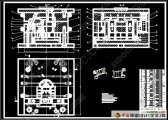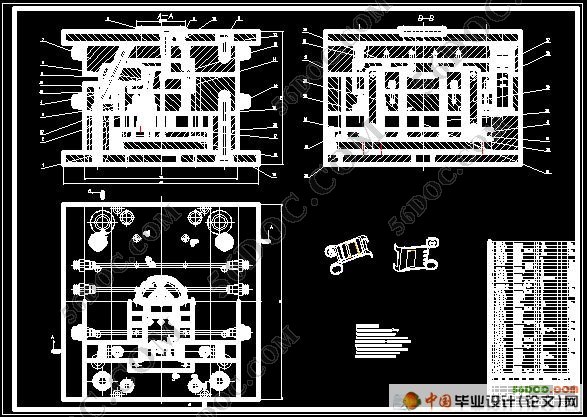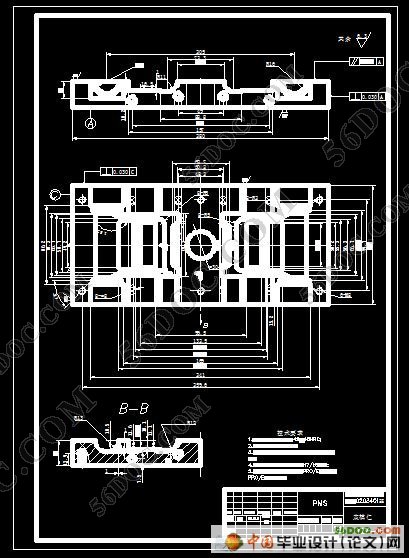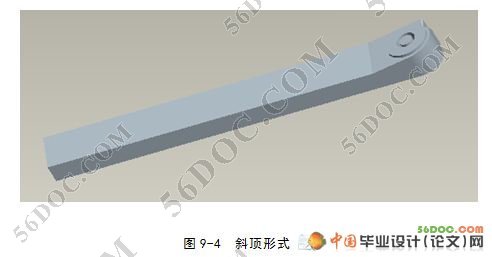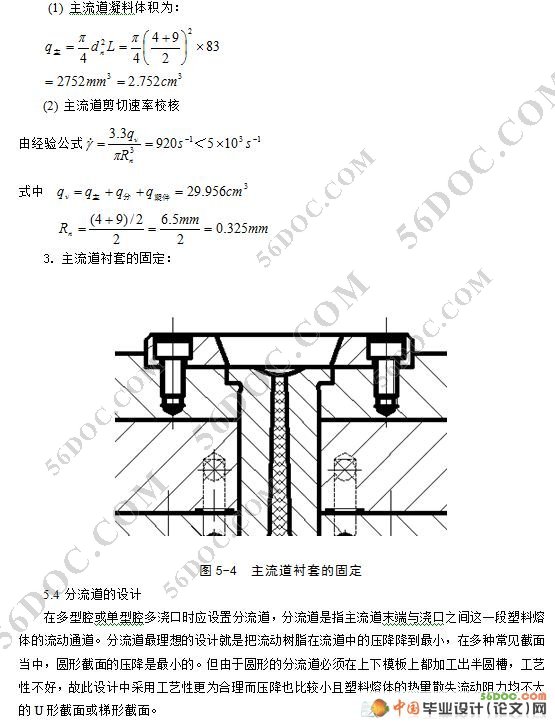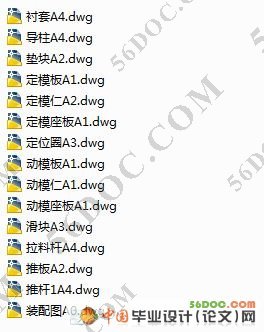原子钟表盖注塑模具设计
摘要 模具是利用其特定形状去成型具有一定形状和尺寸的制品的工具,按制品所采用的原料不同,成型方法不同,一般将模具分为塑料模具,金属冲压模具,金属压铸模具,橡胶模具,玻璃模具等。因人们日常生活所用的制品和各种机械零件,在成型中多数是通过模具来制成品,所以模具制造业已成为一个大行业。在高分子材料加工领域中,用于塑料制品成形的模具,称为塑料成形模具,简称塑料模.塑料模优化设计,是当代高分子材料加工领域中的重大课题。
在模具方面,我国模具总量虽已位居世界第三,但设计制造水平总体上比德、美、日、法、意等发达国家落后许多,模具商品化和标准化程度比国际水平低许多。在模具价格方面,我国比发达国家低许多,约为发达国家的1/3~1/5,工业发达国家将模具向我国转移的趋势进一步明朗化。
本论文介绍了原子钟表盖的注塑模具设计过程。从型腔数量和布局的确定、注塑机的选择、浇注系统设计、模板及其标准件的选用、脱模及抽芯机构的设计、成型部件的设计等一一进行了详细的介绍。塑件有侧孔,需要设计侧向抽芯机构,增加了模具的复杂程度。
关键词:注塑模;侧向抽芯;原子钟表盖。
The Design of Injection Mold for Atomic Clocks Built
Abstract Mold is used to shape the specific shape of a certain shape and size of products tools used by the products of different raw materials, different methods shaped general layout will be divided into plastic molds, metal stamping dies, metal die-casting molds, rubber molds, glass molds. It is used in the daily life of products and various mechanical parts, mostly in the shape of heads through to finishe products, it has become a major instrument manufacturing industry. In the field of macromolecular materials for plastic products shape the instrument, known as plastic molding shape. Plastic molds optimized design is contemporary in the field of macromolecular materials processing major issue.
In Division, our total ranks is the third in the world dies, but the overall design and manufacturing standards than Germany, the U.S., Japan, France, Italy, and other developed countries, are many backward, commercialization and standardization of components are lower than the international standard of many. The prices of many our low-developed countries are lower than that of developed countries 1/3~1/5, industrialized countries will shift further to our heads clear.
This paper introduced the molded plastic components of atomic clocks with the design process. From the number and distribution of cavities identification, cast machine choices, systems design experience, the choice of standards and templates, drawing of patterns and pumping core body design, shaped components design a detailed presentation. The plastics have two sides holes, the design side pumping core institutions need to increase the complexity of the instrument.
Keyword: injection mold; side pumping core; atomic clocks built.
目录 28000字
前言 .1
1.1 塑料模的功能 1
1.2 我国塑料模现状 1
1.3 塑料注射成型简介 2
1.4 塑料模具技术的发展 2
1.5 本设计的意义及目的 3
1 塑件成型工艺分析 4
1.1 塑件(原子钟表外壳)分析 4
1.2 热塑性塑料(ABS)的注射成型工艺 5
1.3 ABS的主要技术指标 5
1.4 ABS成型塑件的主要缺陷及其消除措施 6
2 拟定模具结构形式 7
2.1 确定型腔数量及排列方式 7
2.2 模具结构形式的确定 7
3 注塑机型号的确定 9
3.1 有关塑件的计算 9
3.2 注射机型号的确定 9
3.3 注射机及型腔数量的校核 10
4 分型面位置的确定 11
5 浇注系统形式和浇口的设计 13
5.1 浇注系统设计原则 13
5.2 浇注系统布置 13
5.3 浇注系统设计 13
5.4 分流道的设计 16
5.5 浇口的作用 18
5.6 浇口设计的基本要点 19
5.7 浇口的类型 19
5.8 浇注系统的平衡 20
5.9 冷料井及拉料杆 21
6 排气系统的设计 23
7 成型零件的设计 25
7.1 凸、凹模的结构设计 25
7.2 成型零件的设计 26
7.3 成型零件工作尺寸计算 27
7.4 型腔零件强度、刚度的校核 30
8 模架的确定和标准件的选用 32
9 侧向分型与抽芯机构的设计 34
9.1 斜滑块的各种方案对比 34
9.2 滑块头部的连接方式 36
9.3 斜导柱长度的计算 36
9.4 滑块的定位方式 37
9.5 滑块的锁紧及定位方式 37
10 合模导向机构的设计 38
10.1 导向结构的总体设计 38
10.2 导柱的设计 38
10.3 导套的设计 38
10.4 导柱和导套材料的选择 39
11脱模推出机构的设计 41
11.1 脱模推出机构的设计原则 41
11.2 制品推出的基本方式 41
11.3 塑件的推出机构 41
11.4 脱模阻力的计算 42
12 冷却系统设计 43
12.1 模具温度调节的重要性 43
12.2 冷却系统设计 44
13 数控编程 46
14 选材 48
14.1 塑料成型模具用材料的选择 48
14.2 设计选用的钢材 52
15 模具的使用、维护和维修 54
参考文献 55
致 谢 56
|
